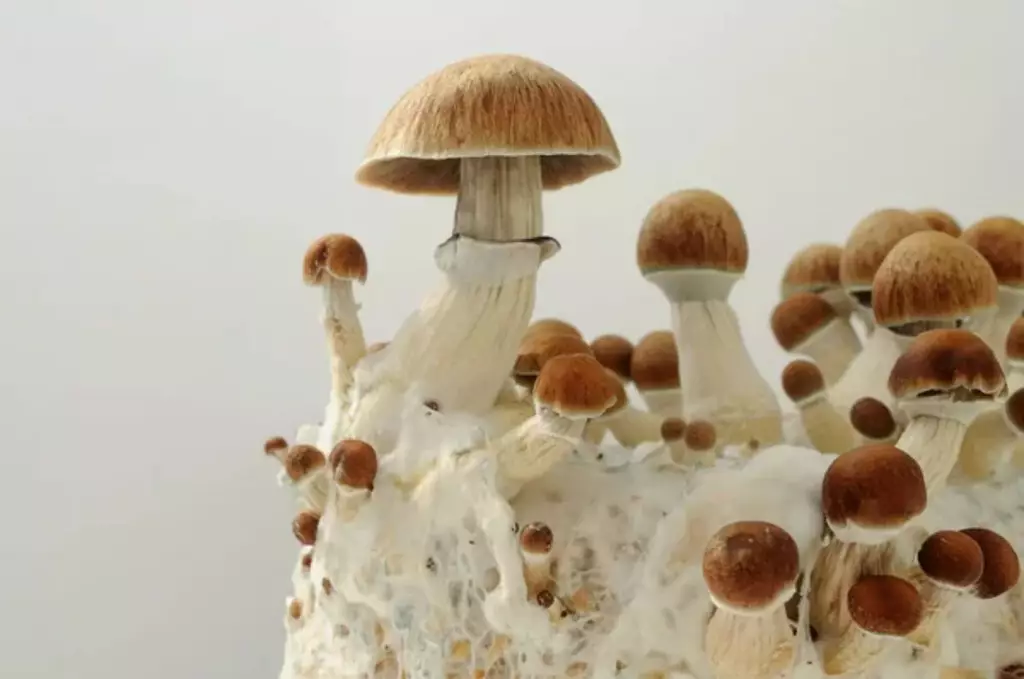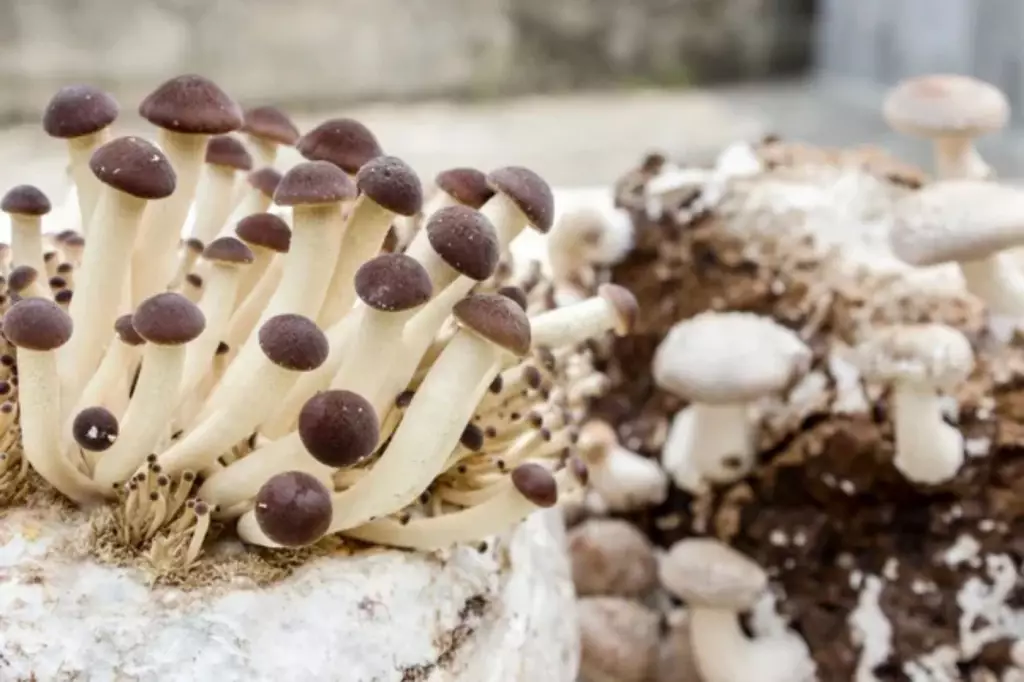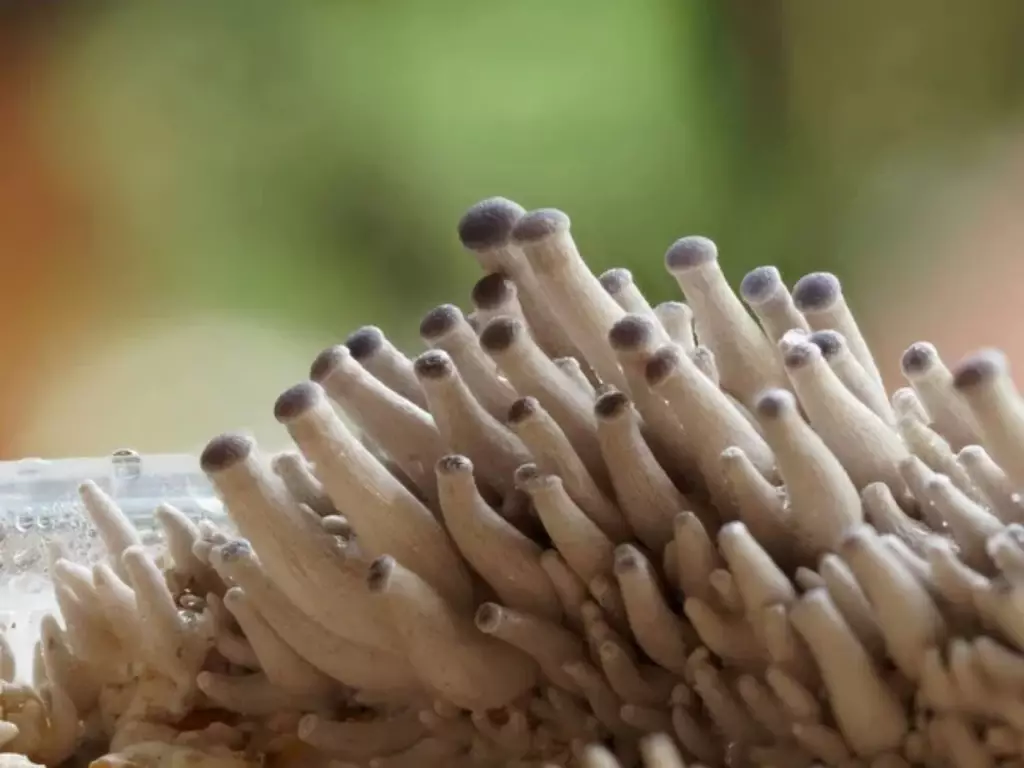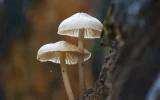The Ideal Mushroom Pinning Conditions: How To Get There
Before the mycelium becomes fruiting bodies or the actual mushrooms, they undergo one crucial phase in the mushroom life cycle: the pinning stage. During pinning, a set of ideal conditions must be met to successfully produce pinheads and move on to the fruiting stage. If you want to learn about these ideal conditions, read this article.
The ideal conditions to initiate pinning are lowering temperatures to 53 to 64°F, achieving a relative humidity level of 85% or more, fresh air exchange, a lower than 1000 ppm CO2 level, and indirect light exposure. Methods such as cold-shocking the mushroom blocks or cutting a hole through the bag can induce pinning conditions.
Below, we’ll share a few more facts about mushroom pinning and how you can watch out for it so you can adjust the necessary conditions to make it ideal for growing mushrooms.
Summary
- Ideal pinning conditions for mushrooms involve lowering the temperatures to 53 to 64°F and providing a relative humidity level of 85% or more.
- Aside from temperature and humidity, other conditions to induce pinning include providing fresh air exchange, a CO2 level of at least 1,000 ppm, and indirect light exposure.
- Mushroom pinning is a crucial process in the growth of mushrooms, as it defines the number of yields you can harvest.

On this page:
The Ideal Conditions to Initiate Mushroom Pinning
The ideal conditions for mushroom pinning are as follows:
- Low temperatures around 53 to 64°F (12 to 18°C)
- High humidity level of around 85% or more
- Fresh air exchange
- CO2 level of about 1,000 ppm
- Indirect light exposure
Take note only to provide these conditions once you see visible cues. If you induce pinning thinking that the substrate is ready without waiting for these visual cues, chances are that you might mess up the growing cycle of your mushrooms.
If you induce pinning too early, you may have to wait longer for pinning as providing the ideal conditions may cause the mycelium to continue depleting the substrate. This longer waiting time increases the chance of contamination and burdens you with more effort of misting.
Another case, if you induce pinning early, is that the mycelium will start pinning without fully colonizing the substrate. This increases the chance of contamination as well, since uncolonized spaces in your substrate may sprout mold formations.

Mushroom pinning is the first process that signals that the mycelium is ready to fruit. This process is also called pinhead initiation, formation, knotting, pin setting, or fructification.
When the mushroom mycelium has consumed most of the substrate, it will stop expanding to search for nutrients. Under ideal conditions, it will start focusing on preparing to produce fruit bodies, or the actual mushrooms we know.
The process of pinning starts with hyphae forming a network of mycelium, which, when bunched together, will create hyphal knots. These hyphal knots give rise to the primordia, which are commonly known as pins. To get a deeper understanding of how mushroom pins develop from networks of mycelium, read this article.
Mushroom pins are called such since they resemble pinheads. They often look like little baby mushrooms growing from the substrate.
When pins continue to develop and become larger, they will officially become mature mushrooms. The pinning process takes about 7–14 days to complete.

To know if the process of mushroom pinning is already taking place, a few telltale signs can be watched out for, such as:
- The mycelium completely colonizes the substrate
- The mushroom block becoming denser and firmer
- White blobs or bumps appearing around the block
These white blobs or bumps are hyphal knots that will continue to grow from the surface of the substrate until they become the mushroom pins.
When you see these white blobs, this is a good sign that your mushrooms are pinning. This visual cue lets you know that it’s about time to provide ideal conditions for pinning to be successful.
How to Provide Ideal Pinning Conditions
The pinning process in mushroom development is crucial, because the fungal cells actively divide to form all the pins needed to produce the final mushroom. From these pins, only a few will grow into mature mushrooms. This process is called fruitbody selection. Only the most viable and healthy-looking pins will expand to become mature mushrooms. For this reason, providing ideal conditions is necessary.
The methods you can use to induce pinning depend on the type of mushrooms you are growing.
-
When growing shiitake mushrooms, whether on logs or on another substrate, pinning is induced by “shocking” the block. Shocking the shiitake log or block is done by submerging them in clean, cold water for 1-3 days.
-
After the pinning initiation, shiitake logs or blocks must be placed in areas where the temperature is around 53°F to 64°F (12°C to 18°C), with a relative humidity of above 90% to get the best results. Shiitake mushrooms prefer a highly humid setting during pin formation.
-
For oyster mushrooms, however, shocking the mycelium to induce pinning is done by dramatically reducing the amount of CO2 inside the growing bags. This can be done by cutting a hole in the growing bag to initiate the mycelium to form pins.
-
Ideal pinning conditions for oyster mushrooms include a temperature of 50°F to 60°F and a 95 – 100% relative humidity level. A CO2 level of at least 1,200-1,500 ppm is required for oyster mushrooms to undergo mushroom pinning, as well as partial light exposure.
-
Oyster mushrooms can also be encouraged to pin using a mushroom pinning accelerator. To find out how to use a mushroom pinning accelerator, read this article.
Whichever method you use to induce pinning depends on the type of mushrooms you are growing. However, the goal will always be the same: provide fresh air, a humid environment, an ideal temperature, and enough lighting.
Mushroom Pin Formations Define the Number of Mushroom Yield

Mushroom pinning is an extremely valuable stage in the growth of mushrooms because it defines how much mushroom yield you can harvest. The relationship between mushroom pinning and yield is explained below:
The pinning stage produces the pinheads for the first and second mushroom flushes
It is during the pinning stage that the pinheads for the first and second flushes are generated. The total yield from the first two mushroom flushes is about 60-75%. It is because of this reason that pinning must be induced properly with ideal conditions.
The greater number of pins produced for the first flush equates to a greater yield
The more pins produced for the first time will set the number of yields. The disadvantage of producing many pinheads, however, is that more pins will compete for the same nutrient which will cause stunted mushroom growth.
On the other hand, if you want to produce larger mushrooms, a few pinhead growths will be fine for you despite meaning lower mushroom yields.
Pins that develop early may delay the growth of other primordia
This is the reason why growers must know the right time to induce pinning. Inducing pinning early in the mushroom growth may spring early growers. An early-rising pin will stunt the growth of other neighboring pins. For this reason, this pin must be removed to allow for even pin formation and to obtain a greater yield.



